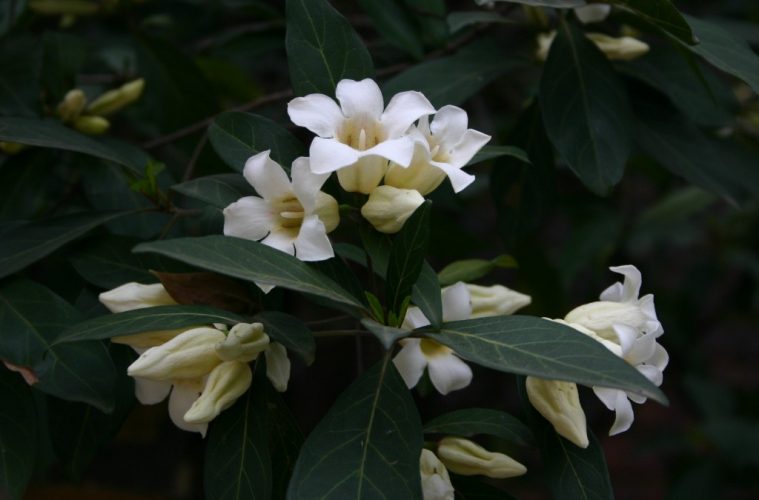Rothmannia globosa, commonly known as September Bells, is an adorable indigenous shrub all South Africans need in their gardens. Found in the coastal and inland forests of KwaZulu-Natal and Eastern Cape, it is well adapted to these sub-tropical environments, appreciating the warmer weather just as we do. It has glossy green leaves and wonderful shape, but the true stars are the clusters of white, bell-shaped flowers that emit a sweet fragrance as spring emerges.
Another indigenous species Rothmannia capensis (commonly known as the Cape Gardenia) shares some similarities with Rothmannia globosa, such as attractive, fragrant flowers and glossy evergreen leaves. It is also well-suited to subtropical climates and can be found in forested areas, often alongside streams and in moist, sheltered locations.
View this post on Instagram
When it comes to design, Rothmannia globosa is incredibly versatile. Its elegant form and fragrant flowers make it an excellent choice for planting close to your home (near patios, decks, or outside your windows) where its scent can be fully appreciated indoors and out. Use it as a focal point or in a mixed shrub border to add height and interest, pairing it with other flowering plants for a continuous display of colour.
This beauty prefers a sunny spot but can tolerate partial shade, particularly in harsher climates. It’s not too fussy about soil type, but generally, well-draining soil is recommended for optimal root health. When planting, dig a hole twice the width of the root ball and just as deep. Mix in some compost to give your new shrub a nutrient boost, place it in the hole, backfill and water well to settle it in. Regular watering is essential, especially after planting to establish a strong root system. Mulch around the base to help retain moisture and keep the roots happy.
Feed this month to give this shrub everything it needs to produce those beautiful blooms. Keep an eye out for pests like scale or pooling water that may damage the roots.
ALSO SEE: PLANT OF THE MONTH: LILIES
This article originally appeared in the Garden&Home September 2024 print edition.

